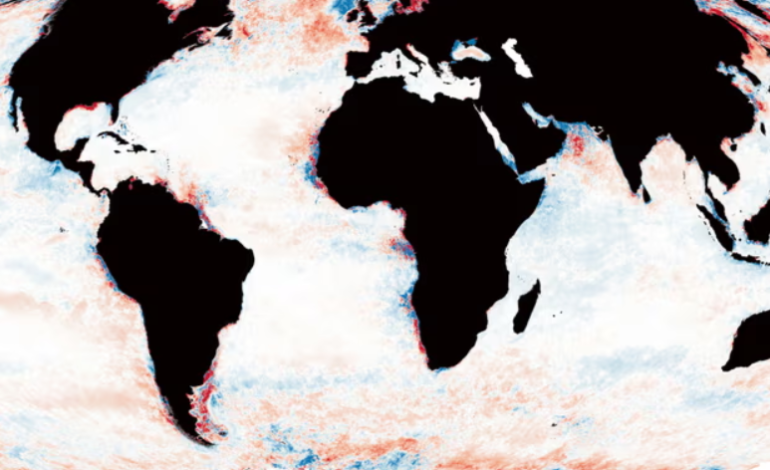Widespread Ocean Darkening Shrinks Sunlit Zones, Raising Concerns for Marine Ecosystems

A significant portion of the world’s oceans has become noticeably darker over the past two decades, a trend that scientists say could have major implications for marine ecosystems, global fisheries, and the ocean’s ability to regulate climate and support biodiversity, the Guardian reports.
A recent study analyzing satellite data and oceanic light measurements between 2003 and 2022 found that 21% of global ocean waters experienced darkening during this period. This change has reduced the depth of the photic zone—the sunlit layer near the ocean’s surface where most marine life thrives—across more than 75 million square kilometers, an area roughly equal to the combined landmass of Europe, Africa, China, and North America.
Marine life is highly dependent on the photic zone, which typically extends to a depth of about 200 meters. In this region, microscopic organisms known as phytoplankton perform photosynthesis, forming the foundation of oceanic food webs and contributing to nearly half of Earth’s oxygen production. Fish, marine mammals, and countless other species also depend on this well-lit layer for feeding, mating, and other life functions.
According to Dr. Thomas Davies, a marine conservationist at the University of Plymouth and lead author of the study published in Global Change Biology, the darkening trend is a “genuine cause for concern.” The data show that in 9% of the ocean, the photic zone has become 50 meters shallower, and in 2.6% of areas, it is now 100 meters shallower—significantly compressing the available habitat for light-dependent marine life.
The causes of ocean darkening vary. Coastal regions often experience reduced water clarity due to upwelling—where nutrient-rich deep waters rise to the surface—and land runoff that carries sediments and nutrients into the sea. However, the reasons for darkening far from shore are more complex. Researchers suspect that global climate change, warming ocean temperatures, and shifting currents are major contributing factors.
Areas showing pronounced darkening include regions of the Southern Ocean and zones along the Gulf Stream near Greenland, where ocean circulation is undergoing significant changes.
Light plays a crucial role in the daily lives of many marine organisms.
“They use it for hunting, for mating, for timing reproductive events,” said Dr. Davies. “When the ocean darkens, organisms must move closer to the surface, resulting in increased crowding and competition.”
While most attention has focused on areas losing light, the study also noted that approximately 10% of the ocean—about 37 million square kilometers—has experienced a brightening effect. For instance, waters off the west coast of Ireland have shown increased light penetration, although adjacent offshore areas continue to darken.
Prof. Oliver Zielinski, director of the Leibniz Institute for Baltic Sea Research in Germany, emphasized the importance of understanding these shifts.
“Such changes can disrupt marine food webs, alter species distributions, and weaken the ocean’s capacity to support biodiversity and regulate climate,” he said.
He also highlighted that coastal waters, which are more directly affected by human activity, are particularly vulnerable.









The latest news in your social feeds
Subscribe to our social media platforms to stay tuned